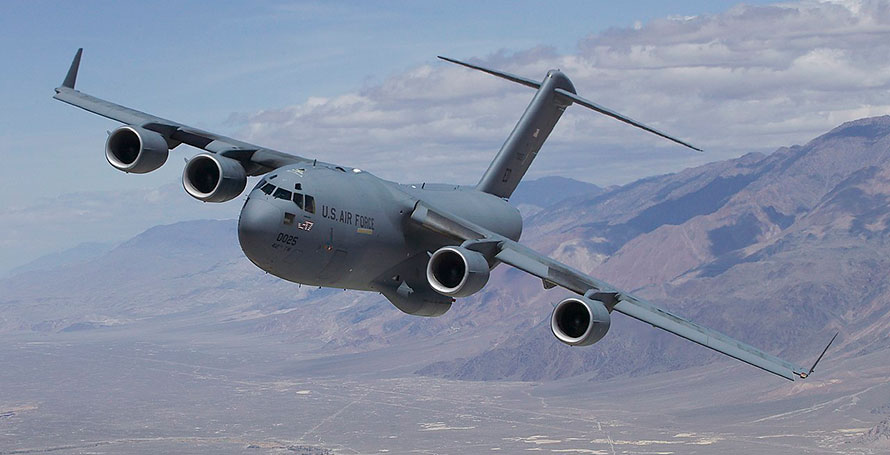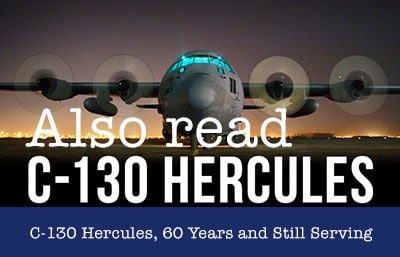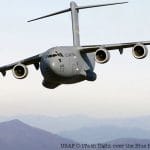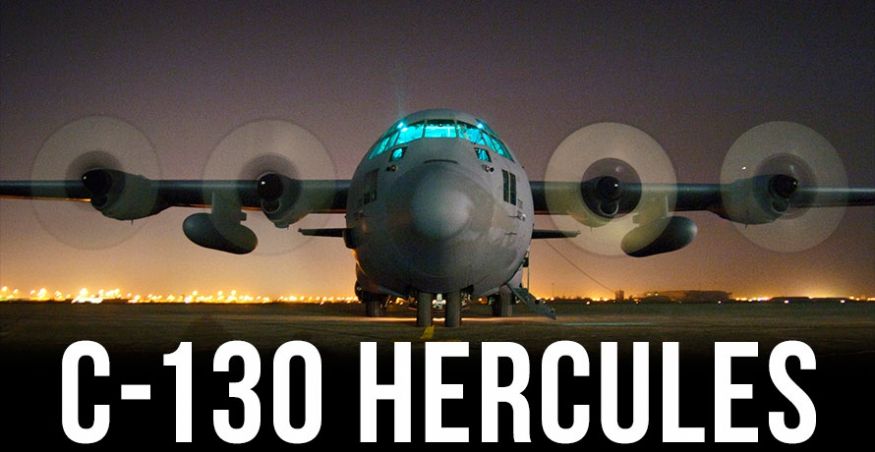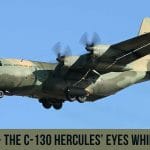C-17 Globemaster III is the USAF’s primary strategic, large transport aircraft developed to replace the C-141 Starlifter. The C-17 is operated by three crewmen: a pilot, copilot, and loadmaster. The first production C-17 was delivered to Charleston Air Force Base in 1993, but the first C-17 squadron, the 17th Airlift Squadron, was activated at Charleston AFB in January of 1995.
It is named the “Globemaster”, but within its community, it is also affectionately known as “The Moose.” This nickname comes from the sound that is heard when the air is venting during refueling on the ground – it sounds like a moose bellowing.
The C-17’s missions are strategic airlift, transporting supplies, personnel, or weaponry over long distances. The Globemaster airdrops both paratroopers and cargo for resupply over areas that may not be easily accessible to other aircraft or behind enemy lines. At 174 feet, the C-17 is approximately 76 feet longer than the C-130J Super Hercules, another widely used tactical transport aircraft. In comparison to the C-5 Galaxy, the USAF’s largest military transport aircraft, the Globemaster is 73 feet shorter. When it comes to the range of each of these cargo aircraft, the Globemaster will transfer 170,900 lbs over 2,785 mi. The C-130 will carry a payload of 72,000 lbs at a range of 2,071 mi, and the C-5 can deliver 389,000 lb over a range of over 2,760 mi. However, with in-flight refueling, all three have a global range capability.
9 Facts About the C-17 Globemaster III
- 4 Pratt and Whitney F117-PW-100 turbofans: produce 40,440 pounds of thrust per engine and propels the C-17 to a cruising speed of 550 mph and a service ceiling of 45,000 ft.
- Cargo Load: 102 troops/paratroops; 36 litter and 54 ambulatory patients and attendants; 170,900 pounds (77,519 kilograms) of cargo (18 pallet positions)
- Mission: tactical airlift, airdrop missions, and medical transport of medical litter and ambulatory patients
- Landing: can land on small runways as short as 3,500 feet and can perform a three-point turn using reverse thrusters to turn around on runways as narrow as 90 feet wide.
- C-17s Produced: A total of 279 have been produced since 1991. Its highest production years were 2002 to 2009 when 16 were produced each year. The final production year was 2014 with a count of seven.
- Record Holder: The C-17 has broken 22 records for oversized payloads, and has also been awarded the Collier Trophy, a highly prestigious aviation award in the United States.
- Special Delivery: The first time the C-17 deployed paratroopers into a combat zone was in March of 2003 when 1000 U.S. soldiers of the 173rd Airborne Brigade were inserted into Northern Iraq.
A C-17 travels along with the President’s plane, transporting both the President’s limousine and the security detachments when the President makes visits within the United States and at foreign locations around the globe. - Operators: Operated by Australia, Canada, India, NATO, Kuwait, Qatar, United Arab Emirates, United Kingdom, and the United States
- Popular Culture: You may recognize the C-17 Globemaster III variants in shows such as the movies Godzilla, Iron Man 1 and 2, and American Sniper. You’ll also find it on TV shows like Seal Team, Hawaii Five-O, and Marvel: Agents of S.H.I.E.L.D.
The C-17 Globemaster III is expected to remain in service with the USAF through 2040. It will remain in service for decades to come carrying out America’s missions by delivering military equipment, troops, and the “Military 3 Bs” of Beans, Bullets, and Band-aids to locations around the world.
Click to get free Infographic: Compare the USAF Cargo Aircraft C-5, C-17, and C-130

